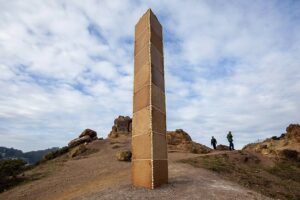Walking around the house last night, setting all the clocks to Daylight Saving Time before bed, I found myself thinking: Why do we have so many clocks, anyway? They used to share one clock for a whole town!
OK, that’s not feasible these days, but every time we switch into and out of DST I miss some clocks because we have so many in the apartment, even though there are only three people.
- Analog wall clocks in the dining room and each bedroom (bought when the kid was small so he’d be familiar with clock faces).
- A waterproof clock in the bathroom for shower timing.
- The cameras we use when we want to take higher-quality photos than a phone can (or when I just want to be able to take pictures of birds with a zoom lens so they don’t fly off before I get close enough to catch more than a vague silhouette in the photo). Related: How I fix the timestamp on photos when I forget to switch the camera’s time.
- Alarm clocks we don’t use for alarms anymore since phones have nicer alarm tones, but they have glowing displays so we can see what time it is when we wake up in the middle of the night.
- Watches we don’t wear anymore but the batteries last for years, so they’re still going.
- The microwave has a clock.
- The stove has a clock.
- The coffee maker has a clock. (The display’s messed up, though, so we stopped bothering to set it.)
- The stereo has a clock.
- The car has a clock.
And that’s not counting the devices that automatically pull from a canonical time source over the internet. Every phone, computer, tablet or ebook reader tracks time, but at least they adjust themselves automatically!
Some of these we placed intentionally, like the wall clocks. Some need to track current time internally to function properly or to keep track of when things happened, like the phones and cameras. But some are just kind of extras.
The microwave doesn’t need a clock. It needs a countdown timer, yes, but the clock is just kind of there as something for the display to show when you’re not using it. I guess since they’re already building the timer circuitry into it, tracking current time doesn’t add much complexity. Same with the oven timer (countdown again) and the stereo (track/album length). Anything that has a display that might show hours/minutes/seconds for some purpose seems to get a clock as its default display. Whether you need it there or not.
Anyway, the upshot is, we have a ridiculous number of clocks for the number of rooms and people here. We always have the time, even though we never seem to have time.
Now I want to write a story about how time goes faster as you get older because you keep adding more clocks, and they use it up.
